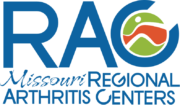Yesterday was the last day of February, and a leap year day at that. February was also American Heart Month, which always provides a great opportunity to dedicate some time and energy to maintaining a healthy lifestyle.
We’re getting a little ahead of ourselves, though. American Heart Month focuses on heart disease, but what exactly is heart disease?
Heart disease is defined as “a disorder of the blood vessels of the heart that can lead to heart attack.” A heart attack happens when there is a lack of nutrients and oxygen flowing from the arteries to the heart due to the arteries being blocked. According to the CDC, heart disease is the leading cause of death among men and women. Of those affected by heart disease, the CDC found African American males were disproportionately affected. Among African American males, over 40 percent were diagnosed with high blood pressure, the highest of any population in America.
Million Hearts is a program that launched in 2012 with the goal of reducing illness and death from heart attack and stroke. Through working with various leaders and communities, they have been successful at creating change such as creating challenges like the hypertension control challenge where health systems provide continuing care and try and achieve hypertension control rates greater than 70 percent. This particular month of February, Million hearts is targeting African American males and challenging them to change their lifestyle by choosing healthier choices. Below is a chart with helpful tips on how to cope and control heart disease.
If you’re wondering how heart disease relates to arthritis, the data points below give a good sense of what we know about these them:
- 52% (186,000) adults with cardiovascular disease also have arthritis
- 48% (704,000) adults with high blood pressure also have arthritis
- 46% (625,000) adults with high cholesterol also have arthritis
As the above data shows, our heart health and our joint health are very much connected. In the same vein, just as it’s good to know the signs and symptoms of arthritis, let’s take a brief look at the signs of heart disease… and how we might reduce the impact of heart disease on our personal health.
The typical indications of heart disease stem from heart pain, or heaviness in the center of the chest. Other symptoms include shortness of breath, sweating, indigestion, nausea, as well as abdominal, shoulder, and lower back pain. Though these are just common symptoms, keep in mind that not everyone experiences them. Symptoms and their level of pain may vary across gender and age. For example, where some elderly women may have fatigue and weakness when walking, and doing chores, others may experience little or no pain at all. Little or no pain is called silent heart disease and may not be diagnosed until after a heart attack occurs.
Since the difference between healthy and unhealthy fatigue and weakness isn’t always obvious, getting regular checkups helps us tell them apart. Your doctor can diagnose whether you have heart disease by looking at your medical history and physical exams. You don’t need to wait for your next exam to reduce the chance of heart disease, though. With Steps to Better Health classes like Walk With Ease and Living a Healthy Life, you can improve your stamina, reduce undue stress on your heart, learn how to manage disease symptoms and your overall health and make new friends, too!
